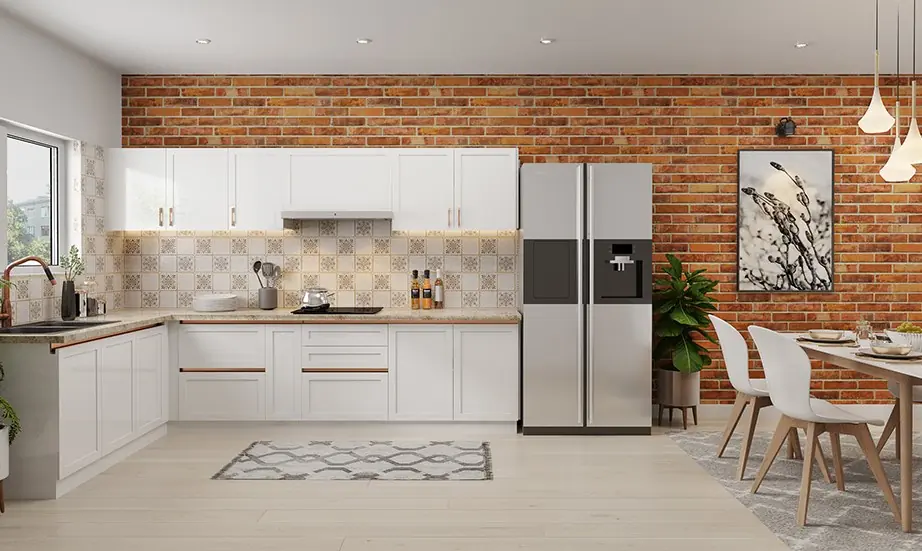Are you a proud plant parent looking to master the art of indoor plant care? Look no further! In this comprehensive guide, we will provide you with valuable tips and insights to keep your indoor plants healthy and thriving. With years of experience and a passion for “Indoor plant care tips,” we are excited to share our knowledge with you. So, grab your watering can and let’s dive in!
Understanding the Basics of Indoor Plant Care
Choosing the Right Plants for Your Indoor Space
When it comes to indoor plant care, selecting the right plants for your space is crucial. Consider factors such as light availability, temperature, and humidity levels in your home. Some plants thrive in low light conditions, while others require bright, indirect sunlight. Research each plant’s specific needs before bringing them home to ensure they will thrive in your environment.
Popular low-maintenance indoor plants include pothos, snake plants, and ZZ plants. These plants can tolerate a wide range of light conditions and are relatively forgiving for beginners. If you’re feeling more adventurous, consider adding flowering plants like orchids or African violets to your collection.
Providing Adequate Lighting
Proper lighting is crucial for the health and growth of your indoor plants. Most plants require bright, indirect sunlight to thrive. Place your plants near windows with filtered light or invest in artificial grow lights for areas with limited natural light.
Keep in mind that different plants have varying light requirements. Some plants, such as succulents and cacti, prefer direct sunlight, while others, like ferns, thrive in shady spots. Learn about your plants’ lighting preferences and adjust their placement accordingly.
Watering Your Indoor Plants
Watering is an essential aspect of indoor plant care, but it’s important to find the right balance. Overwatering can lead to root rot and other issues, while underwatering can cause wilting and stunted growth. Check the moisture level of the soil regularly by inserting your finger about an inch into the soil. If it feels dry, it’s time to water.
Remember that different plants have different water requirements. Cacti and succulents, for example, prefer dry conditions and should only be watered sparingly. On the other hand, tropical plants like ferns and peace lilies thrive in moist soil and require more frequent watering. Research each plant’s specific needs to ensure you’re providing them with the right amount of hydration.
Taking Your Indoor Plant Care to the Next Level
Fertilizing Indoor Plants
To ensure your indoor plants receive the necessary nutrients, it’s important to fertilize them regularly. Choose a high-quality, balanced fertilizer specifically formulated for indoor plants. Follow the instructions on the package to determine the appropriate dosage and frequency.
When fertilizing, remember that less is often more. Overfertilizing can burn the roots and harm your plants. Start with a diluted solution and gradually increase the concentration if needed. Additionally, avoid fertilizing during the dormant period, as your plants require less nutrients during this time.
Monitoring Humidity Levels
Indoor environments often have lower humidity levels compared to outdoor spaces, which can affect your plants’ health. Some plants, such as ferns and orchids, thrive in high humidity conditions, while others, like succulents, prefer drier air.
Consider investing in a humidifier or creating a pebble tray to increase humidity levels around your plants. Misting the leaves with water can also provide a moisture boost. On the other hand, if your home is too humid, ensure proper air circulation and avoid overwatering to prevent fungal issues.
Pruning and Propagating Indoor Plants
Pruning is an essential practice for maintaining the shape and health of your indoor plants. Regularly trim dead or dying branches, yellowing leaves, and leggy growth. Use clean, sharp pruning shears to prevent the spread of diseases.
Additionally, propagating your indoor plants can be a rewarding experience. Many plants can be propagated from stem cuttings or leaf cuttings. Research the propagation techniques specific to your plants, and soon you’ll have a collection of new plants to share with friends and family.
The Indoor Plant Care Table Breakdown
Below is a comprehensive breakdown of essential care requirements for common indoor plants:
| Plant | Lighting | Watering | Fertilizing | Humidity |
|---|---|---|---|---|
| Pothos | Low to bright indirect light | Allow top inch of soil to dry between waterings | Monthly during growing season | Tolerates various humidity levels |
| Snake Plant | Low to bright indirect light | Allow soil to dry completely between waterings | Every 2-3 months | Tolerates low humidity |
| Fiddle Leaf Fig | Bright indirect light | Allow top inch of soil to dry between waterings | Every 2-4 weeks | Moderate to high humidity |
| Succulents | Bright direct sunlight | Allow soil to dry completely between waterings | Every 2-3 months | Tolerates low humidity |
Frequently Asked Questions about Indoor Plant Care Tips
1. How often should I water my indoor plants?
The frequency of watering depends on various factors, including the type of plant, its size, and the environmental conditions. As a general guideline, check the moisture level of the soil regularly and water when the top inch feels dry.
2. Can I use tap water to water my indoor plants?
Tap water is generally safe for most indoor plants. However, some plants are sensitive to chemicals present in tap water, such as fluoride and chlorine. Consider using filtered or distilled water for these plants. Additionally, allow tap water to sit overnight before watering to allow chlorine to dissipate.
3. How often should I fertilize my indoor plants?
Most indoor plants require fertilization every 2-4 weeks during the growing season (spring and summer). However, always read the instructions on the fertilizer package and adjust the frequency based on the specific needs of your plants.
4. How do I prevent pests from infesting my indoor plants?
Regularly inspect your plants for signs of pests, such as tiny insects, webbing, or yellowing leaves. To prevent infestations, maintain good plant hygiene by removing dead leaves and debris. If you notice pests, isolate the affected plant and treat it with an appropriate pesticide or natural remedy.
5. Can I place indoor plants in rooms without windows?
While most plants require some access to natural light, there are a few low-light tolerant species that can thrive in rooms without windows. Consider investing in grow lights specifically designed for indoor plants to provide them with the necessary light spectrum.
6. Should I rotate my indoor plants?
Rotating your indoor plants periodically is beneficial as it ensures even light exposure and prevents the plant from leaning towards a light source. Rotate your plants every few weeks to promote even, upright growth.
7. Why are the leaves of my indoor plant turning yellow?
Yellowing leaves can indicate various issues, including overwatering, underwatering, nutrient deficiencies, or pests. Assess the overall health of your plant, adjust watering practices if necessary, and consider fertilizing with a balanced plant food.
8. How do I revive a wilted indoor plant?
If your plant is wilted and droopy, it may be due to underwatering or root issues. Check the moisture level of the soil and water accordingly. If the soil is dry and the plant remains wilted, carefully remove it from its pot and inspect the roots for rot or damage. Trim any damaged roots, repot the plant in fresh soil, and provide appropriate care.
9. Can I use homemade compost for my indoor plants?
While compost is a great source of organic matter, it can be challenging to ensure its quality and nutrient balance. Commercial potting mixes formulated for indoor plants are often a safer choice. However, if you decide to use homemade compost, ensure it’s well-aged and free from pests and diseases.
10. Are indoor plants safe for pets?
Many common indoor plants are toxic to pets if ingested. Before bringing any new plant into your home, research its toxicity level and ensure it’s safe for your furry friends. Consider placing toxic plants out of reach or opt for pet-friendly alternatives.
In Conclusion
Caring for indoor plants can be a fulfilling and rewarding experience. By understanding the basics of indoor plant care, providing adequate lighting, watering appropriately, and going the extra mile with fertilizing and monitoring humidity levels, you can create a thriving indoor garden that brings beauty and serenity to your space.
Don’t stop here! Check out our other articles on a wide range of gardening topics to further enhance your indoor plant care journey. And if you’re feeling inspired, why not explore the fascinating world of real estate and home improvement through our provided article links:
Discover the Benefits of Sierra Investment Properties
The Importance of a Real Estate Transaction Lawyer

